
You Call Yourself a Cook, But Do You Have These Knives?
We broke down which knives deserve a slot in your knife block with expert insight to back it up.
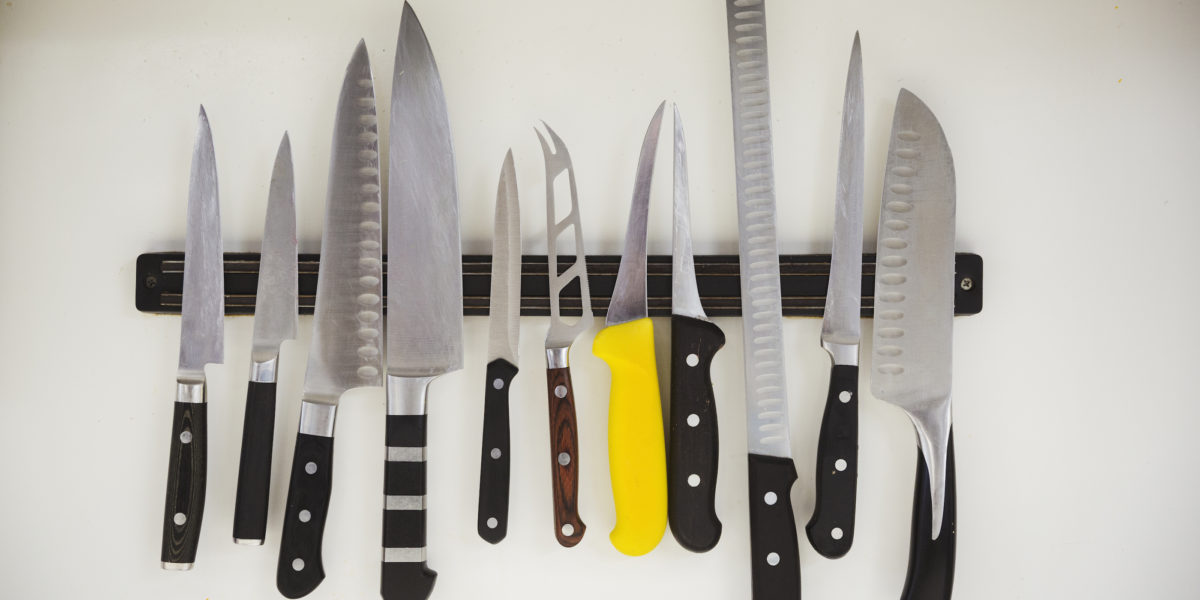
We only recommend things we love. If you buy something through our site, we might earn a commission.
I remember the day my grandmother finally let me use a real knife. At the age of 7, I was doing something trivial (like cubing butter for pie crust, which could’ve been done with a butter knife) though the excitement of practicing my grip was overwhelming nonetheless.
My grandmother has always taken her knives very seriously—she sharpens them regularly (or takes them to be sharpened), never lets them make their way into the dishwasher, and has a drawer where each knife is given a perfect slot. I remember thinking that having nice knives was only for people like her, who cooked every day—whereas I would need to earn my chef’s knife over decades of dinners.
Years went by. I cooked in professional kitchens, my own kitchen, on-camera and on-set, and hosted dinner parties where I explained chiffonading basil to friends and family—yet I still didn’t have the knives to back it all up. Upon stopping into Bernal Cutlery, a full-service cutlery shop in San Francisco’s Mission District that has been pairing people with their perfect set since 2010, I learned more about knives than I ever could’ve imagined.
Upon leaving, I realized that I cannot call myself a cook if I don’t take the time to invest in and care for a few good knives.
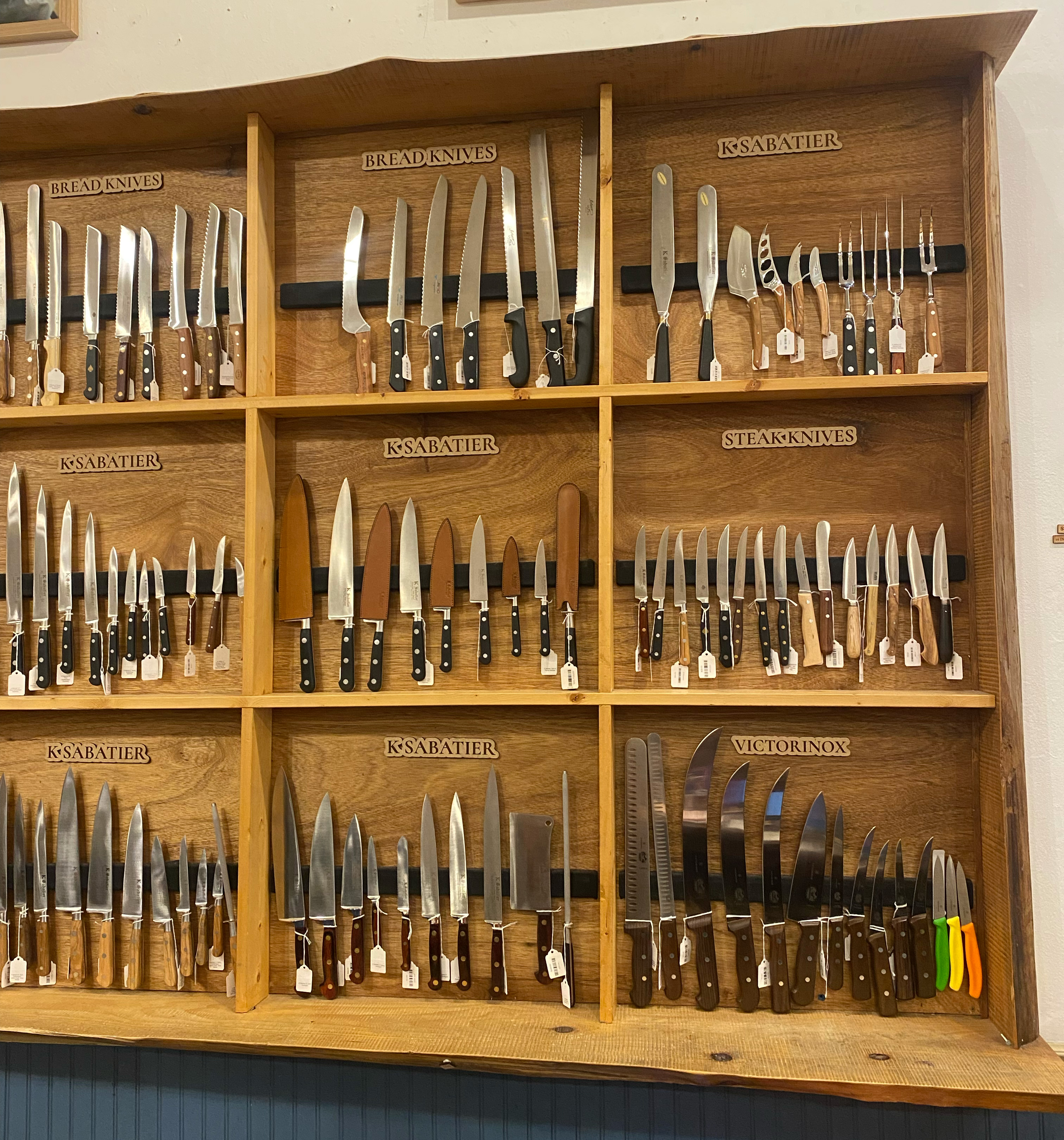
Magdalena O’Neal
To help us all graduate from beginner-level expertise to my grandmother’s level (and trust me she is top-tier), I got the inside scoop on how to pick a knife based on your culinary needs from Bernal Cutlery co-owner Josh Donald. With decades of knife knowledge, Donald has selected a handful of knives for home cooks depending on their go-to cooking style.
Whether you’re a baker, an at-home butcher, or are prepping fruits and vegetables most days, Donald has a couple of knives to help elevate your cutlery game, as well as tips and tricks for choosing better knives in general.
Everyone Needs a Chef’s Knife—and Keep It Sharp
If you’re only going to have one knife in your kitchen, it should be a chef’s knife. The long blade, sharp edge, and wide face make it an easy option to do just about anything.
“Cutting food is a basic part of cooking. It can be done with a variety of things and people without access to knives make things like jar lids work,” Donald tells us. “But having one nice knife is going to make your cooking a lot smoother.”
While many knives come in sets, Donald suggests investing in a chef’s knife first as opposed to a kit that comes with others that will get used less. To Donald’s point, my first chef’s knife came from IKEA in a pack of three, and the bread and paring knife got little to no use in my college kitchen.
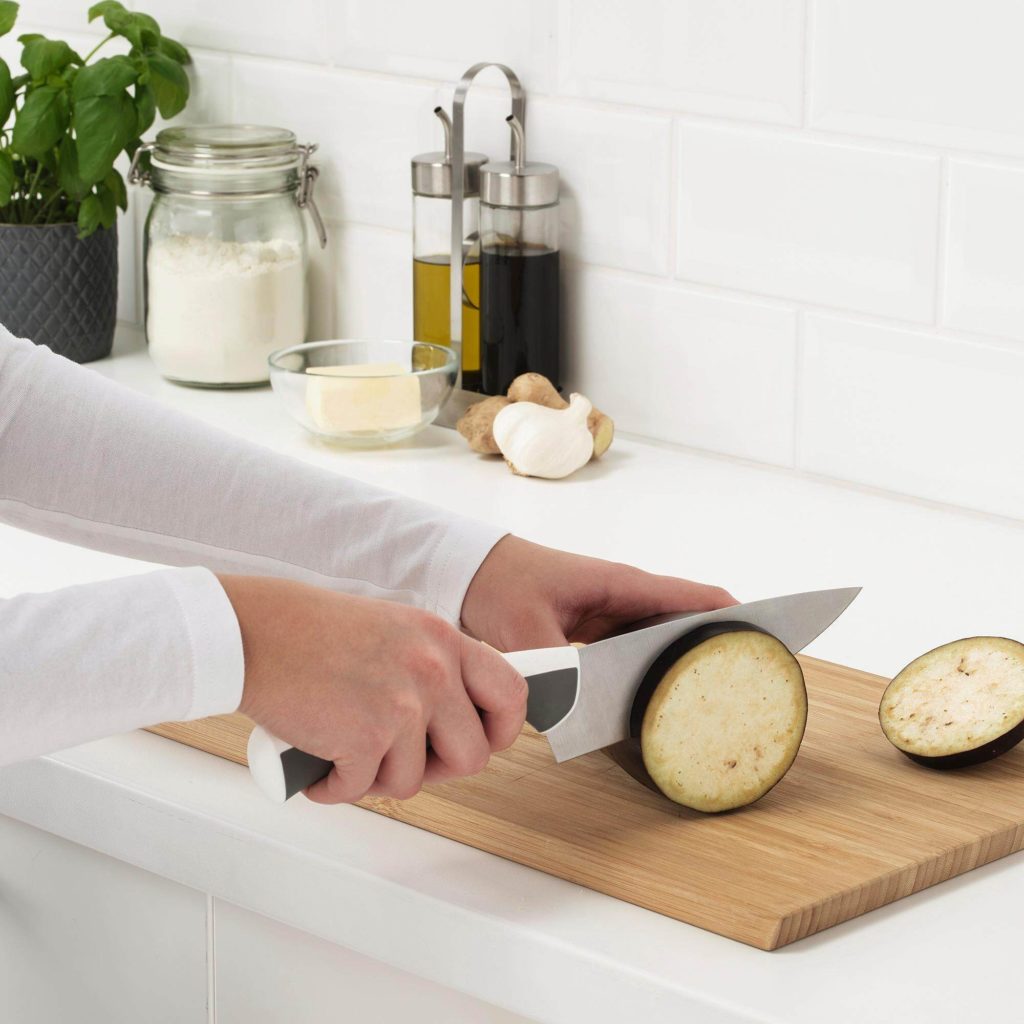
IKEA
The chef’s knife became my go-to for everything; without being sharpened, it didn’t last me as long as one might expect. We made many meals together until, eventually, the tears that streamed down my face from chopping onions with a dull knife became too much to bear.
“The only knife that never needs sharpening is one that never gets used,” Donald tells me.
Now, I have a chef’s knife from a restaurant supply store—and it only set me back about $50. I regularly take it to the farmers market for sharpening and it offers a sturdy grip.
When it comes to picking your own chef’s knife, Donald suggests taking the time to consult an expert about your specific needs, price range, and style preference, since this knife will be your most used.
Typically, chef’s knives can range from $20 to $200 depending on make and material. I prefer a knife with a hard plastic or polypropylene handle because it’s a bit lighter, like this 8-inch chef’s knife from Mercer Culinary, which only costs $20. This style is usually on the lower end of the price range since it’s a cheaper material than hand-carved wood or knives where the blade runs through the handle, like Bernal’s 8-inch K Sabatier chef’s knife crafted in France that costs over $100.
The metal used in the blade also varies from region to region and is used to determine pricing. Some allow for more forceful cutting. Others, like a hand-carved Japanese knife such as Bernal’s Seki Kanetsugu Pro, shouldn’t be used on hard fruits like coconuts or to hit fruit pits; Donald suggests using it for clean cuts on fruits and vegetables due to its flexible blade.
Ready to start thinking about your second or third knives? “Sets of knives are tricky because people tend to get a lot of knives they don’t really use,” Donald says. “I’m a fan of building a set around what’s most important to the person. Each knife has a range of things that can and can’t be done with it, so the chef’s knife isn’t for everything.”
For the at-Home Butcher
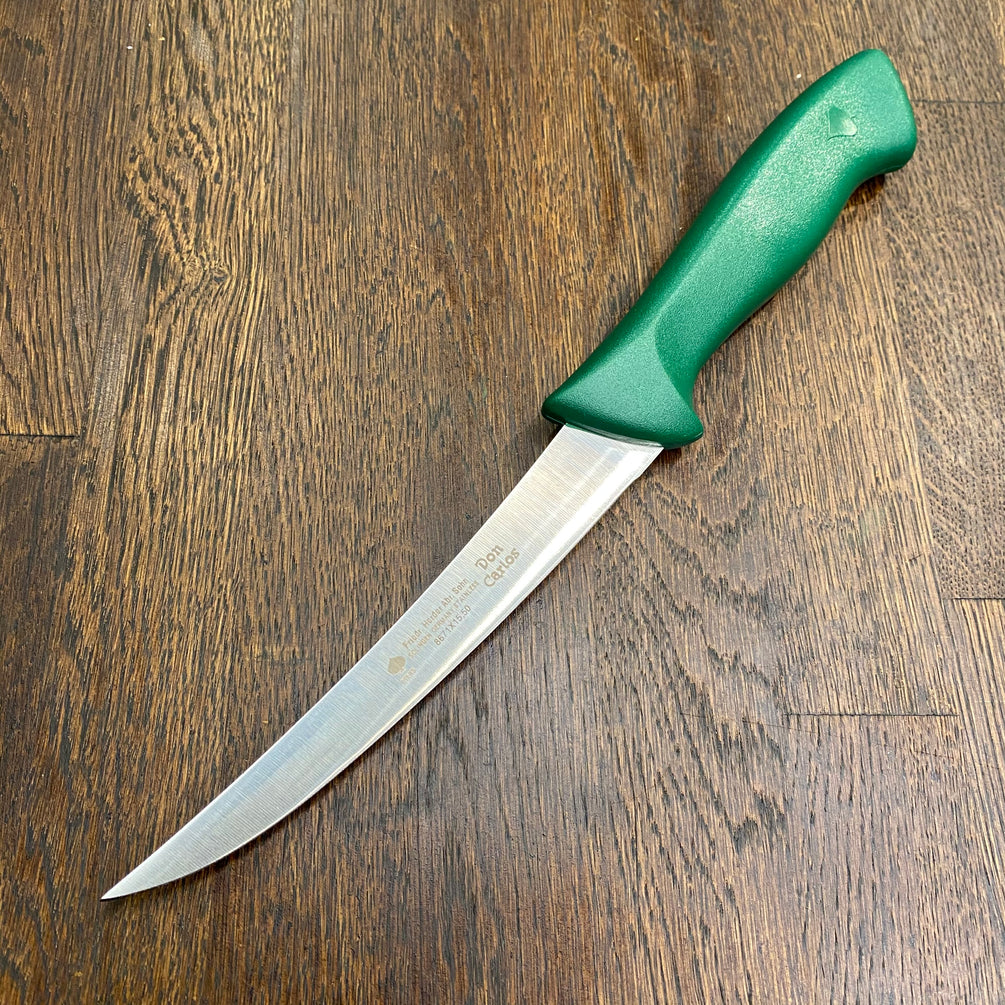
Bernal Cutlery
Meat lovers can also rely on a chef’s knife, though Donald suggests starting with one that has a longer blade than most, like the K Sabatier ‘Authentique’ series 9. This knife is nimble enough to chop vegetables and herbs, and sturdy enough to get through tough cuts of meat like ribs, whole chickens, or tenderloins where a shorter knife may not do the job.
Another addition for the at-home butcher is a boning knife, which Donald says is “great for everything from taking apart a chicken to more ambitious meat work—and you can save money doing it yourself.” Plus, it’s not an overpriced addition. The Friedr Herder 6” Boning Knife, for example, from Bernal will only cost you about $25.
For the Baker

Bernal Cutlery
If you’re baking bread at home, decorating cakes, or whipping up pastries, odds are you don’t need a knife often—but when you do, you’ll want it to be sharp. Donald’s first pick for any bread-lover or baker is Bernal’s Pallares 10-inch bread knife with a boxwood handle, priced at just over $40. The second is a bit more budget-friendly if you’re not looking to splurge: Costing less than $20, Bernal’s 10-inch Ateco blade has a polypropylene (hard plastic) handle and is perfect for slicing through a cake or loaf of fresh sourdough due to its serrated edge.
The final baker’s tool that Donald suggests is a dough scraper, which he explains is great for sectioning dough and cleaning cutting boards. The metal edge makes for clean cuts on doughs of any kind, and while it isn’t a knife, it should still be sharpened regularly.
For the Meal Preppers and Veggie Eaters
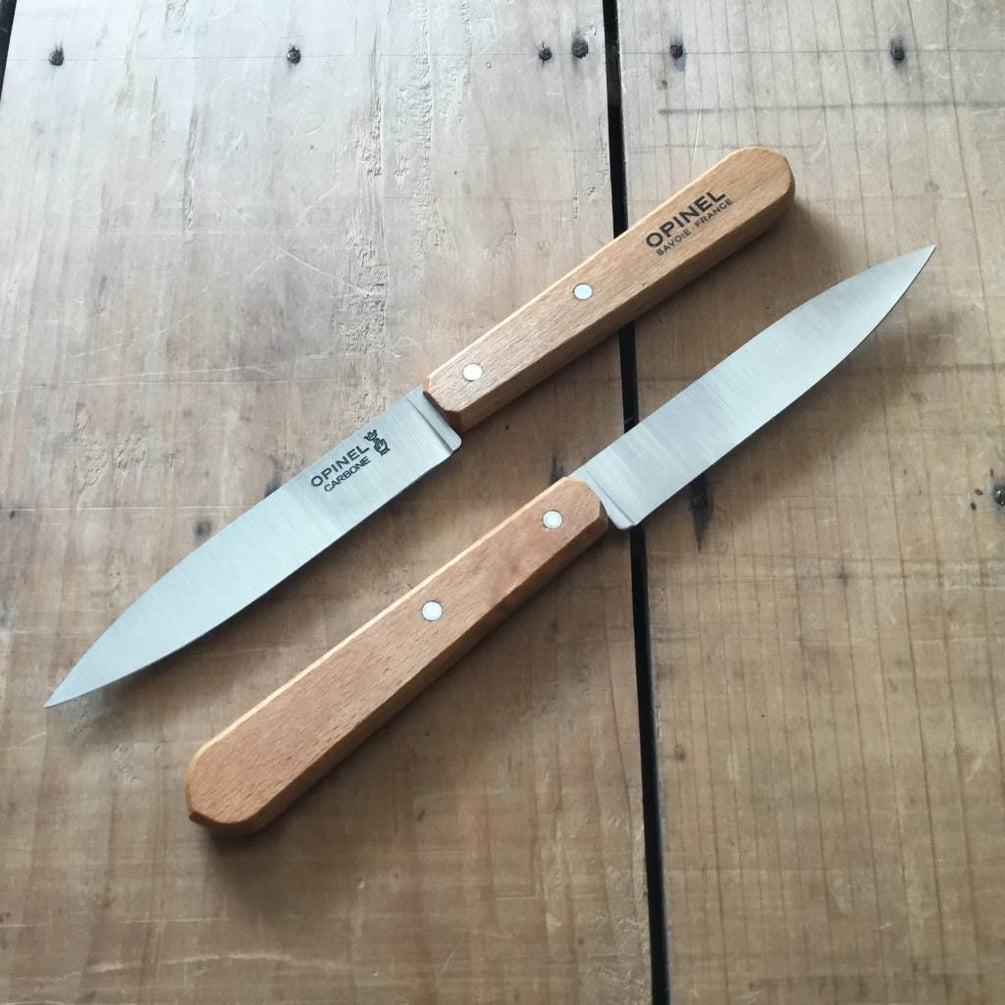
Bernal Cutlery
When it comes to meal prepping, your knives will get a big workout slicing, chopping, and getting ingredients in shape to last throughout the week. Similarly, if your go-to lunch or dinner is a vegetable-packed salad or stew, you’ll want a knife that can break all of that down with ease.
“For fruit and vegetables, thin hand-ground Japanese knives are hard to beat,” Donald says, pointing to Bernal’s Kanetsugu ProM series, “Their blades have a slightly convex ground on the face, making them zip through fruits veggies with less sticking.” The $80 knife will stay sharp longer, though it still needs occasional sharpening, and will make prepping smoothies, lunches, or dinners even easier. However, the fine edge means it shouldn’t be used for hard pits (like avocados) or cutting open coconuts.
A second knife that fruit lovers should have on hand is a paring knife, which is great for segmenting fruit, peeling the outer layers off, or moving around a big seed or pit. “Bernal’s Opinel paring knives are “narrow so they can be used in hand for peeling or for sectioning fruit where a curved cut is needed,” says Donald.
For more knife insight, stop into Bernal Cutlery in San Francisco to chat with Donald and his team about the knife that’s right for you—or try a local restaurant supply shop for some more expert input.
